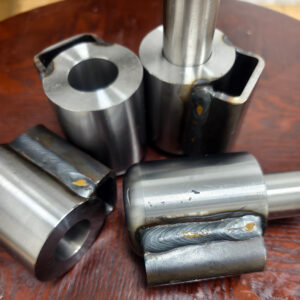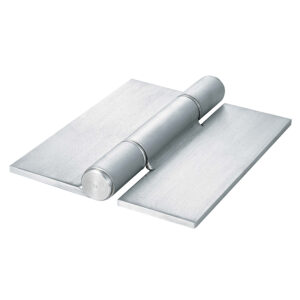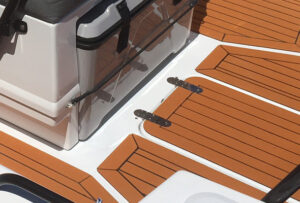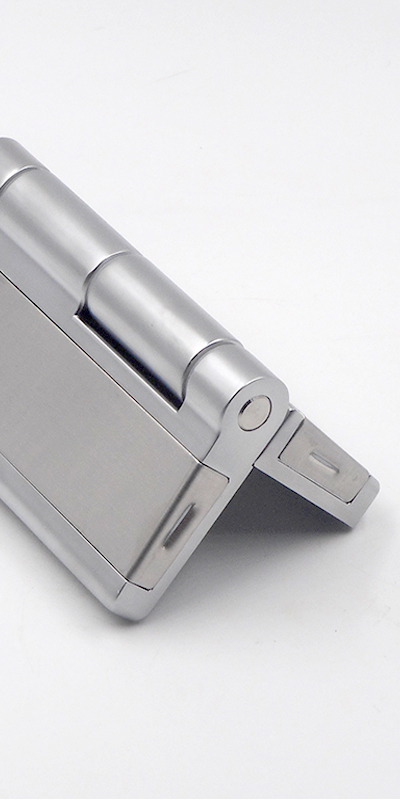Hinge binding in industrial doors leads to malfunction, downtime, and increased maintenance costs.
Hinge binding happens when resistance prevents a door from opening or closing smoothly, often due to misalignment, wear, or environmental factors. This problem impacts the performance of industrial enclosures, test chambers, and access panels.
Understanding the root cause of hinge binding helps manufacturers and engineers ensure long-term equipment reliability.
What Is Hinge Binding in Industrial Applications?
Hinge binding in industrial environments refers to the friction or obstruction occurring when a door fails to operate smoothly due to misaligned or damaged hinges. Unlike residential doors, industrial doors are subject to heavier loads, tighter tolerances, and more extreme conditions, which make binding more likely if components are not properly designed or maintained.
In factory floors, electrical cabinets, climatic test chambers, and shipping containers, door performance is critical. Binding not only restricts movement but also damages the hinge over time, leading to misalignment and even frame distortion. This issue is particularly problematic in sectors requiring frequent access to control systems or sealed environments.
Hinge binding occurs when friction or misalignment restricts smooth door movement, often damaging hinges and disrupting equipment performance.
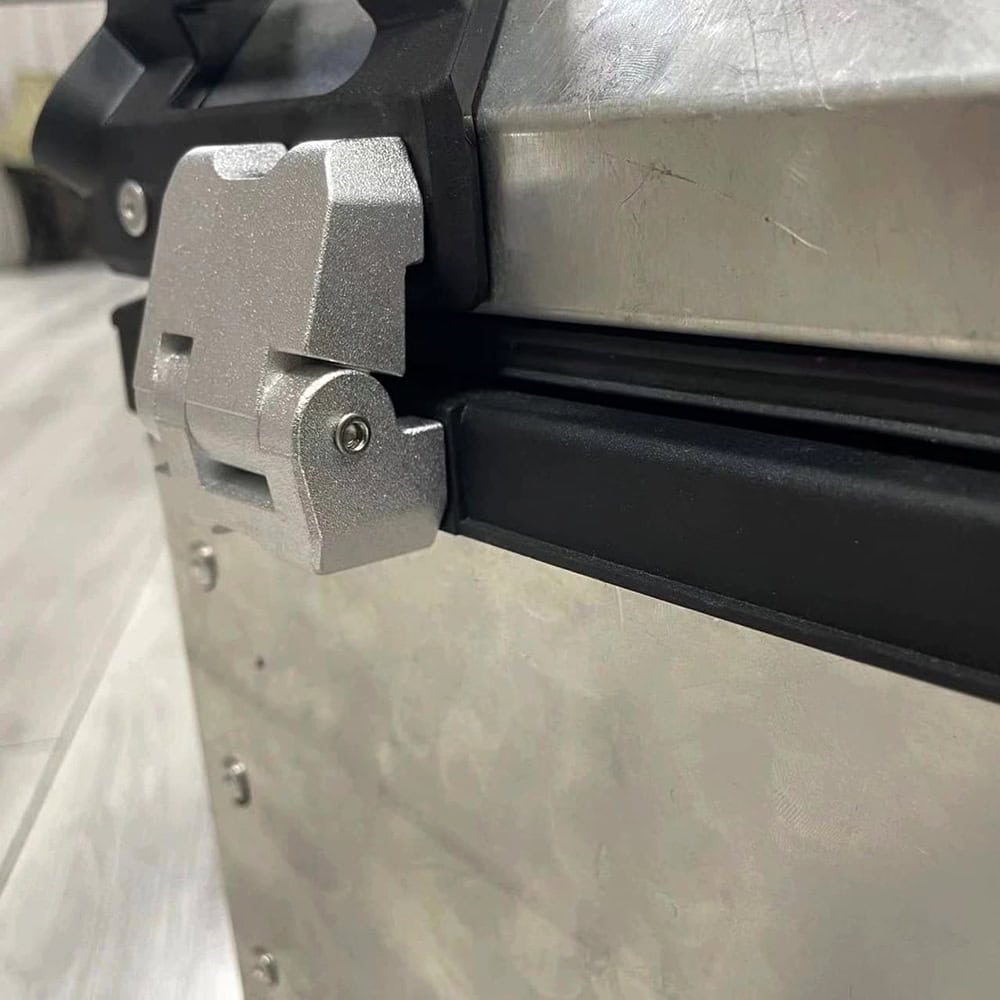
Why Industrial Doors Are More Prone to Binding
Unlike interior doors, industrial enclosures often use heavy duty hinges or cold storage room hinges to bear substantial loads or seal pressurized environments. Such applications demand precision. A slight misalignment or material expansion can lead to hinge binding, affecting operations and requiring immediate correction.
Common Signs of a Hinge-Bound Door
Identifying hinge binding early can prevent equipment failure. Common symptoms in an industrial context include difficulty opening the door fully, audible creaking or scraping sounds, or visible gaps on the hinge side. In automated systems, sensors may detect misalignment or resistance before a full mechanical failure occurs.
Over time, if binding persists, it leads to warped doors, compromised enclosures, and eventually, full hinge failure. Operators should be trained to detect these early warning signs to prevent equipment downtime or safety risks.
Signs of hinge binding include stiff operation, scraping sounds, door gaps, or failure to close completely in industrial equipment doors.
Critical Indicators to Monitor
-
Uneven door gaps on hinge side
-
Door springs open or won’t close fully
-
Grinding or squealing sounds
-
Door panel fatigue or bending
In specialized applications, such as climatic test chamber hinges, the need for a tight seal makes hinge integrity vital. Even a minor binding issue can compromise the performance of the equipment.
How Industrial Hinge Mechanisms Work
A hinge functions as a pivoting mechanism, enabling rotational motion. In an industrial setting, a hinge typically includes two metal leaves connected by a pin or knuckle. One leaf is mounted on the door, and the other on the fixed frame. Variants such as weld on hinges or trailer door hinges are built for rugged, repetitive use.
The choice of hinge and its material—stainless steel, aluminum, brass—depends on the application. Aluminum Geared Continuous Hinges, for instance, distribute weight across the door’s entire length, minimizing stress at a single point.
Industrial hinges operate through a pivoting mechanism; poor alignment or wear in these components causes binding and motion resistance.
The Role of Load and Precision
In industrial doors weighing over 50kg, such as machine enclosures or testing equipment, hinges must bear both static and dynamic forces. The forces are amplified if the door is opened frequently or in high-vibration environments.
| Hinge Type | Application | Failure Risk Due to Binding |
|---|---|---|
| Heavy Duty Butt Hinges | Electrical boxes | Medium |
| Piano Hinges | Equipment enclosures | Low |
| Marine Hinges | Outdoor cabinets | High (due to corrosion) |
| Aluminum Hinges | Lightweight panels | Medium |
Mortise Misalignment: A Frequent Manufacturing Flaw
Inconsistent mortising during hinge installation can be a major cause of binding. A mortise is the recessed area where the hinge leaf sits. If it is too shallow, the hinge protrudes; if too deep, the leaf sinks. Both scenarios disrupt the hinge axis and cause binding under pressure.
In mass manufacturing, if mortising is done manually or without CNC control, small variations multiply across batches. This is especially true in OEM factories producing enclosures or heavy access doors, where tolerances must be strictly controlled.
Improper mortising leads to hinge protrusion or sinking, disrupting door alignment and causing binding.
Solutions for Accurate Mortising
-
Use CNC machines for door leaf slotting
-
Check mortise depth with feeler gauges
-
Include QC checklists at assembly stage
-
Redesign doors to use piano hinges for better alignment tolerance
Material Expansion from Humidity or Temperature Changes
Many industrial doors are made of sheet metal or composite panels, both of which can expand or contract with environmental fluctuations. In facilities like food processing or semiconductor production, temperature-controlled zones can create material stress. If a door swells, even a few millimeters, the hinge alignment changes and causes binding.
This is especially critical in outdoor enclosures, cleanrooms, or test chambers where sealing is essential. Temperature-induced swelling also compresses hinge clearances and leads to failure.
Environmental fluctuations cause metal expansion, altering hinge alignment and creating door binding issues.
Design Considerations for Expansion
-
Use hinges with floating knuckles or flexible pins
-
Choose aluminum hinges for better thermal stability
-
Design door frames with thermal expansion joints
-
Include adjustable mounting brackets in hinge design
Hardware Deformation or Wear Over Time
With constant usage, hinges wear out. The knuckle can elongate, the pin can loosen, or the leaves can deform. This is particularly true for high-cycle applications such as production line enclosures or machine access panels.
When wear is uneven, the door shifts slightly every time it’s opened. Eventually, the misalignment becomes significant enough to cause binding. Many B2B buyers now specify hinge durability in cycles—100,000 or even 250,000+ operations.
Over time, hinge pins or leaves wear out, causing misalignment and resulting in binding and door malfunction.
Extend Service Life Through Better Design
-
Use staked hinge pins to prevent pin slippage
-
Incorporate bronze or PTFE bushings
-
Specify lifecycle testing during procurement
-
Upgrade to detachable hinges for easier maintenance
Incorrect Hinge Selection or Incompatibility
Using the wrong type of hinge for the door’s weight, frequency of use, or mounting material can cause immediate or gradual hinge failure. For example, using soft close hinges on a heavy industrial door may result in inadequate closure force and eventual binding.
Similarly, if a supplier provides hinges without proper technical drawings or load specs, mismatched components may be installed. This issue is common in outsourced manufacturing without adequate communication between buyer and supplier.
Choosing incompatible hinges—wrong load, material, or specs—causes misalignment and binding, especially in heavy-use industrial settings.
Select the Right Hinge Type for Application
-
Validate load-bearing capacity before ordering
-
Confirm compatibility with door and frame material
-
Use CAD models to simulate fit and movement
-
Avoid decorative or light-duty hinges in industrial settings
Improper Installation and Fastening Torque
Even the correct hinge can perform poorly if installed incorrectly. Over-torqued or under-torqued screws can cause the hinge leaf to warp or sit unevenly. Mounting the hinge with mismatched fasteners (e.g., soft screws on a heavy-duty hinge) also introduces issues.
Installers should be trained to use torque-limiting tools and reference technical drawings. Some hinge failures are simply a result of improper manual screw tightening during assembly.
Incorrect installation torque deforms hinge leaves or frames, leading to poor movement and eventual hinge binding.
Fixing Torque-Related Issues
-
Use torque-controlled drills
-
Pre-drill pilot holes to reduce splitting
-
Follow manufacturer torque specs
-
Inspect door after first 100 cycles for shift
How to Fix a Hinge Bound Door in Industrial Settings
Fixing a hinge-bound door begins with identifying the root cause. If the hinge is worn, replace it. If the binding results from misalignment, adjust or shim the hinge mount. In metal enclosures, laser measuring tools can help realign door panels accurately.
For OEM production, redesigning the mounting system or changing the hinge model can prevent future issues. Hinges like butt hinges or concealed hinges offer compact installation but require precision. Use 3D models to avoid conflicts.
To fix hinge binding, adjust misaligned parts, replace worn hinges, and verify installation accuracy with proper tools.
Tools & Techniques for Correction
-
Use digital calipers to measure door gaps
-
Insert metal or plastic shims behind hinge leaf
-
Use door-lift jacks for re-hanging heavy doors
-
Replace with upgraded hinge models if recurring
Prevention and Quality Control During Manufacturing
The best way to manage hinge binding is to prevent it entirely. This involves rigorous QC protocols during design, production, and assembly. Factories should perform random hinge load tests, use inspection templates for alignment, and work with suppliers who provide accurate CAD files.
Suppliers based in China, such as IHINGES, have positioned themselves as reliable industrial hinge production base options, offering custom hinges with verified drawings and design support.
Prevent hinge binding through precision manufacturing, supplier validation, and strict QC during installation and production.
Best Practices for B2B Hinge Buyers
-
Request test data for cycle durability
-
Require drawing approval before mass order
-
Visit supplier or request video inspection before shipment
-
Specify hinge with margin for tolerance errors
Conclusion
Preventing and fixing hinge binding in industrial applications starts with proper design, precise installation, and the right hinge selection.
Let me know if you would like this article converted into a downloadable PDF format or repurposed for Alibaba listing descriptions.

